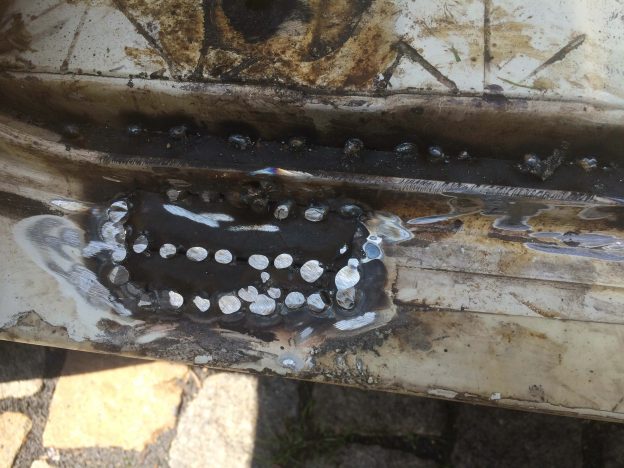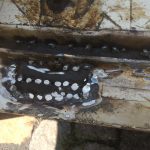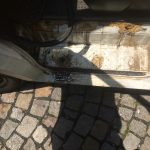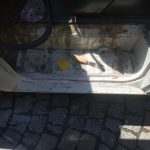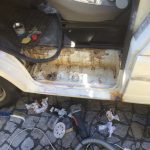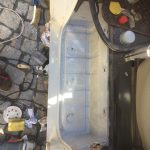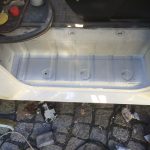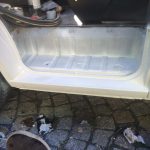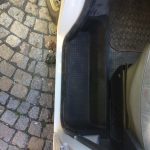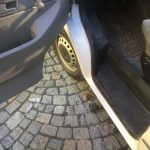As I learned recently stick electrodes are not suitable for welding thin sheet metal of a cars body shell. The electrodes tend to burn holes instead of welding anything together. Unfortunately, all other welding techniques like MAG,MIG, WIG (TIG) welding, require expensive hardware and some degree of education. After some research I found a rent-able workshop including hydraulic lifts, all kinds of tools and MAG-Welding equipment for 8€ an hour. After some practice welding on small pieces of steel, I felt confident enough to start handling the spots i prepared as described in part one:
- VW T4 Project – War against Rust – Battle V – Sill Part Two – welded sill
- VW T4 Project – War against Rust – Battle V – Sill Part Two – weldet sill top
- VW T4 Project – War against Rust – Battle V – Sill Part Two – added putty
- VW T4 Project – War against Rust – Battle V – Sill Part Two – more sanding and fertan
- VW T4 Project – War against Rust – Battle V – Sill Part Two – undercoat
- VW T4 Project – War against Rust – Battle V – Sill Part Two – some layers of paint
- VW T4 Project – War against Rust – Battle V – Sill Part Two – final result 1
- VW T4 Project – War against Rust – Battle V – Sill Part Two – final result – as good as new
- VW T4 Project – War against Rust – Battle V – Sill Part Two – final result as good as new
To improve the durability of the inner surfaces I used a new rust converter called fertan. As research has shown it is used by a lot of car restaurateur workshops and is quite effective protecting the metal from new rust by creating an protective coat. After 24 hours of letting it dry I additionally added another new rust preventing oil: Owatrol. It’s a synthetic resin based oil able to prevent rust to grow by cutting it off from water and air. By that, the spot should hold 2-3 years without replacing the complete sill.

